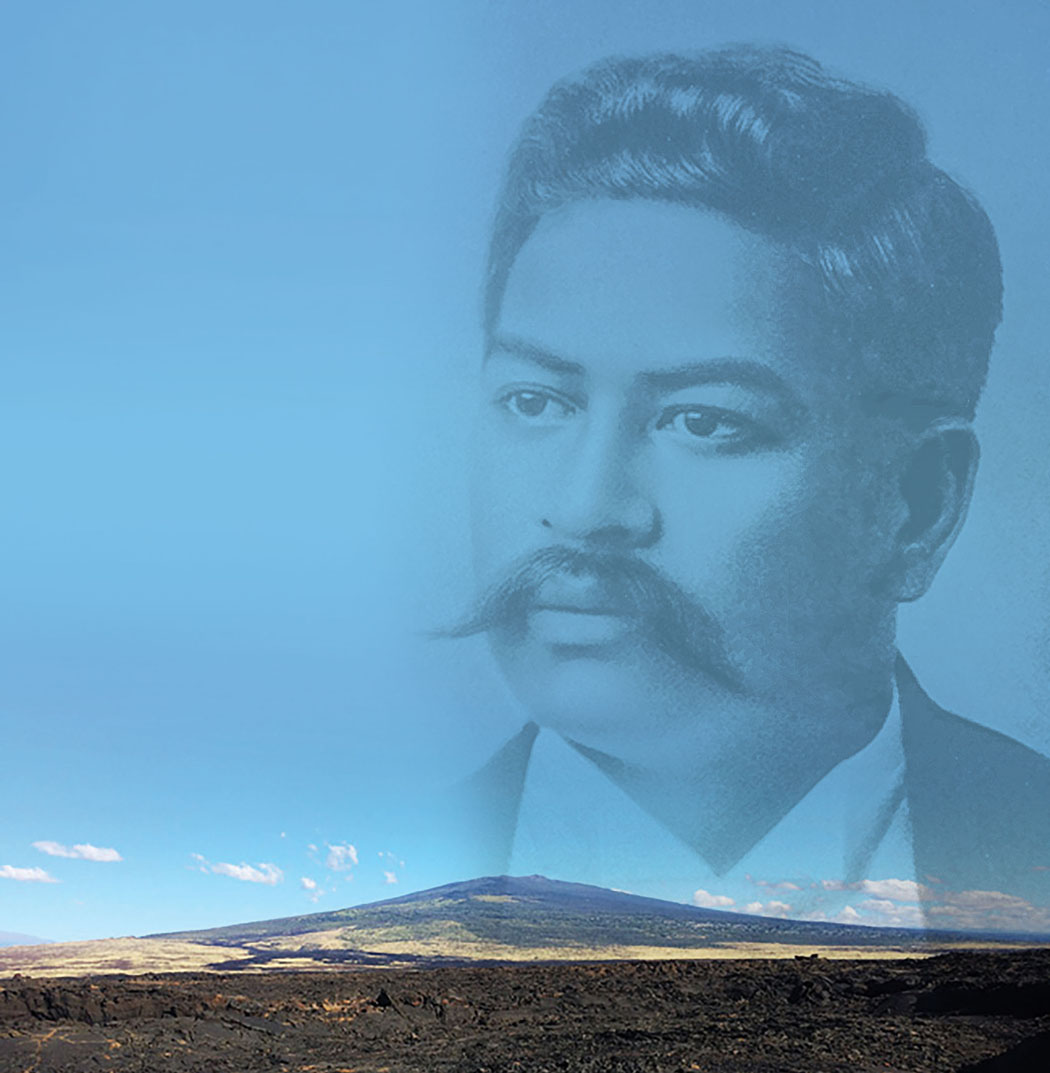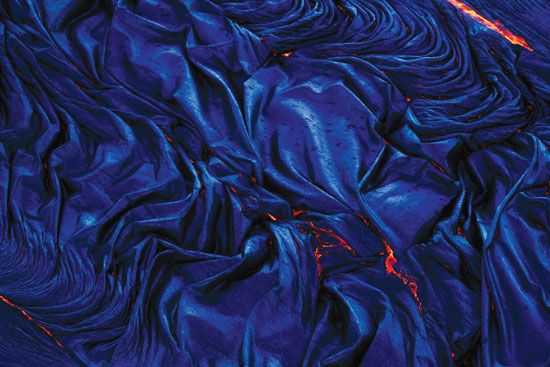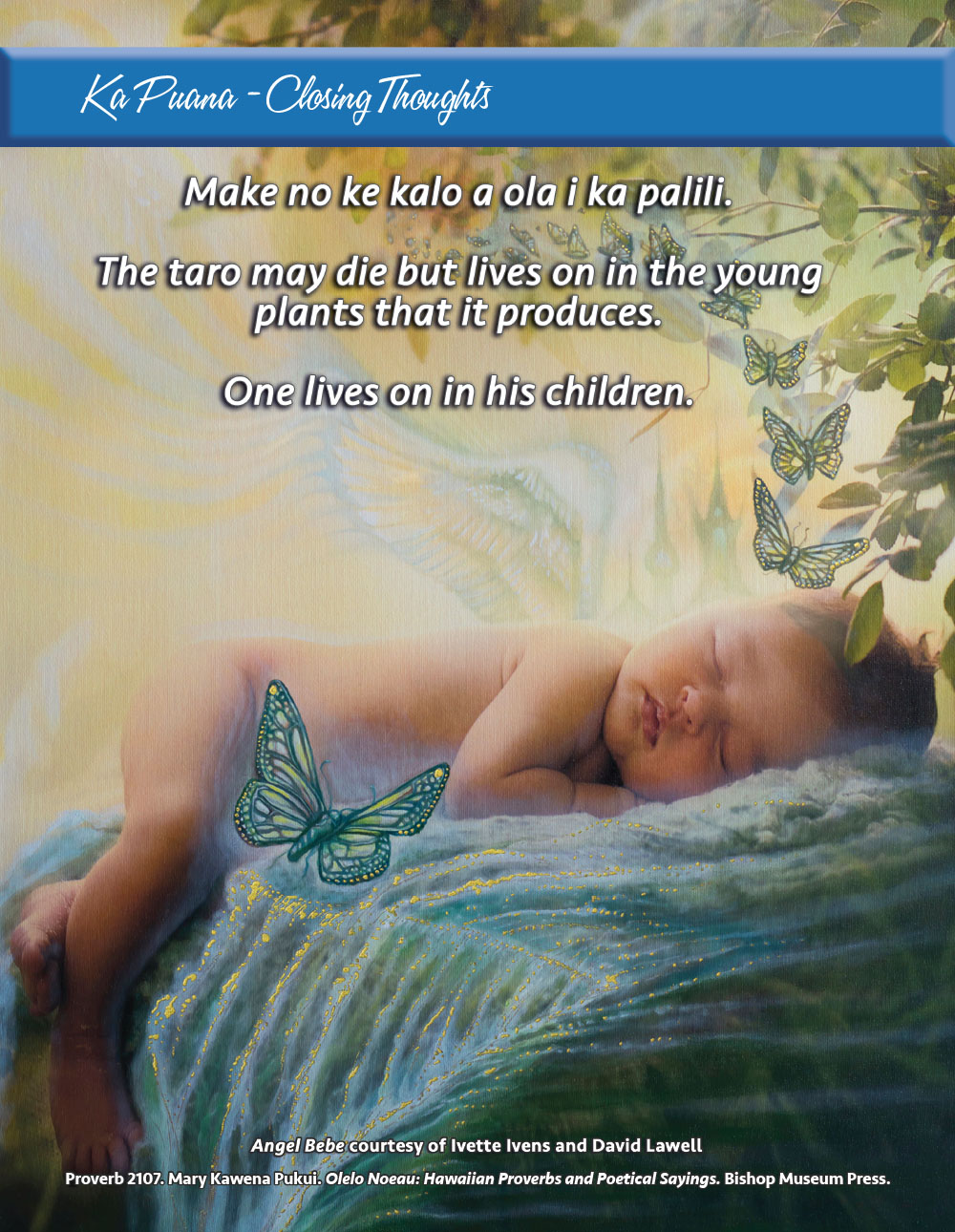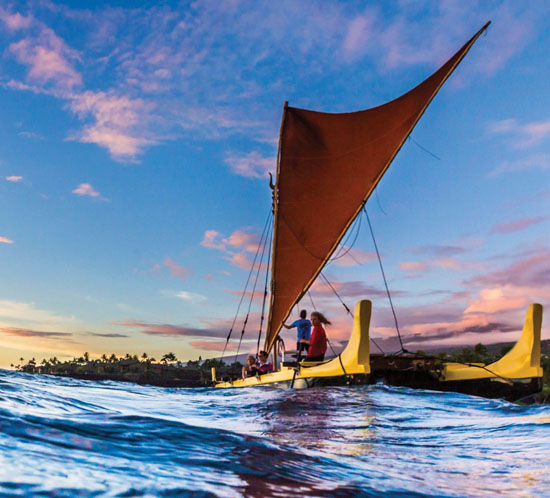
Sailing into the Future: Nā Pe‘a Participants Apply Canoe’s Lessons to Life
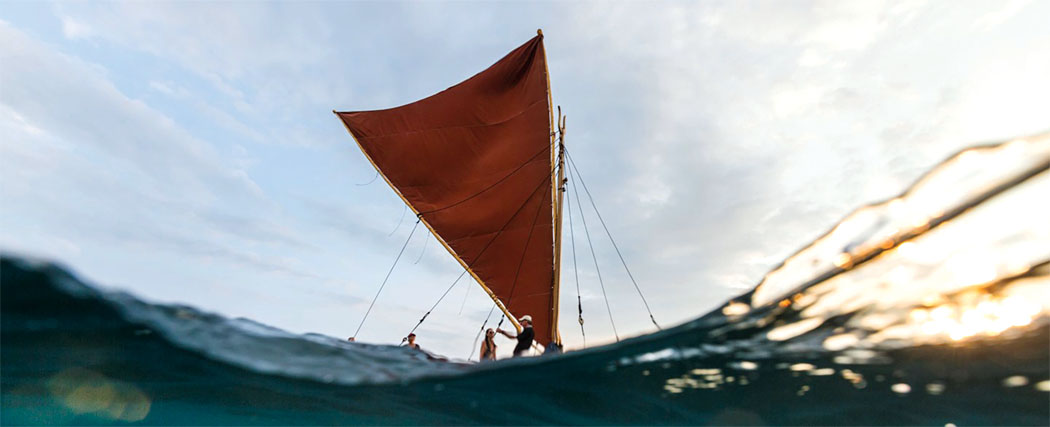
By Sara Stover
“Stay off the rocks,” Kalani Nakoa instructs his young crew. The wind is light out of the west as they launch one of the three 26-foot single-hull canoes from Kīholo Bay. Within minutes, the wind shifts to the southwest.
Going 12 mph, the Nā Pe‘a crew makes it to Kahuwai, where they tour the petroglyph field and learn about its unusual Hawaiian sail motifs, etched into the smooth pāhoehoe lava rocks. In the canoe, however, the rocks are to be avoided.
The Roots
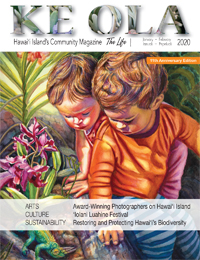
A collaboration of the Nakoa Foundation, the Ala Kahakai National Historic Trail, Kamehameha Schools, and The Nature Conservancy, Nā Pe‘a is a youth program that focuses on the fundamentals of strong leadership, and effective stewardship of land and marine resources. This is accomplished by perpetuating the Hawaiian sailing canoe’s traditions and practices—an effort that grew out of an ancient force compelling Kalani to build the recreated, historically-accurate Hawaiian canoe, Wa‘a Kini Kini.
“I had to build it. I didn’t know why at the time,” Kalani explains. “A genetic memory of canoe-building that was triggered by something, perhaps.”
“But once I built the canoe, everything grew from there. The Nā Pe‘a program, Eka Canoe Adventures, the Nakoa Foundation, all have roots in that first canoe,” Kalani elaborates, referring to the organic beginnings of a program that demonstrates the usefulness of traditional Hawaiian cultural values in the modern world.
A Sense of Kuleana
In an age where every second of life seems documented and planned, keiki in the Nā Pe‘a program bravely board the canoe with no clear knowledge of how long their journey will take. Neither do the courageous parents, who eventually receive a phone call that their children have completed the voyage.
What is clear, however, is how cultural place-based teaching and learning increases children’s retention, and socio-emotional development and educational outcomes considerably.

“When Kamrin is outdoors and applying what he learns hands-on, he excels faster and has a greater understanding,” says Kalei Haleamau-Kam, a Nā Pe‘a board member and mother to 16-year-old Kamrin Kam. “He’s grown so much through this program, taking on big responsibilities. Kamrin is now ho‘okele [steersman] and even one of Kalani’s deckhands for the other boats!”
“Students with a strong connection to local Hawaiian culture feel more connected to nature, more self-efficacious, and are more likely to engage in pro-environmental behavior,” exclaims Kalani.
Not only can Nā Pe‘a crew members feel more empowered and effective in their environmental responsibilities, but they can also receive one college credit for attending a HCC Hawaiian Studies class. The two-day class includes learning about design and construction of the traditional Hawaiian canoe at the Palamanui Campus and learning how to rig the Nā Pe‘a canoes at Kīholo.
The Nā Pe‘a program is designed to develop a Hawaiian cultural presence, and sense of kuleana to place and to traditions. Kuleana is the Hawaiian concept that with every right comes a responsibility.
Once students fill out an application and are accepted into the program, they have the right to sail on one of four wa‘apea canoes. With this right, however, comes a responsibility that can only be learned at sea. To teach its young students kuleana, Nā Pe‘a must first teach them leadership.
Leadership through Transformation
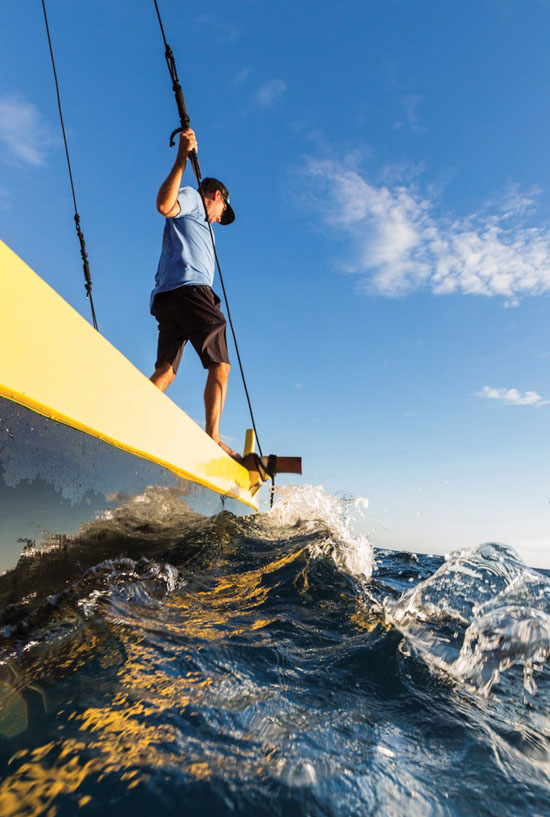
photo courtesy of Tor Johnson for Eka Canoe Adventures
To instill a sense of kuleana to cultural tradition, Nā Pe‘a develops youth leadership through environmental and social responsibility, canoe sailing, teamwork, communication, decision-making, basic ocean safety skills, navigation, and CPR.
Entry-level crew members are generally middle school students living in the Kona district, with program activities typically conducted year-round. In Nā Pe‘a, it is the student’s journey, not the destination, that is emphasized.
Whether it be the ocean or life, a true navigator must have an open heart and mind, setting sail despite (or even because of) a destination unseen.
Nā Pe‘a encourages leadership through navigation in students like 18-year-old Ruthie Mersburgh. A cancer survivor and student member of the board, Ruthie has come a long way since she first began the program in sixth grade.
“When Ruthie started the program, she was so timid. But I recognized her ability to be a skilled steersman right away,” Kalani says of how Ruthie was hesitant about steering when he initially instructed her to. “I watched her confidence grow every time she steered the canoe out of a precarious situation. She transformed from mouse to lioness!”
“Uncle Kalani isn’t just making us sailors. He’s trying to make us the best version of ourselves,” Ruthie adds. “He teaches from the heart, not from a textbook. He will point out things in a nurturing way.”
Kamrin, who now works with Kalani on several boats, agrees: “Uncle Kalani always teaches us something new while making us laugh, giving us the animated version of every lesson!”
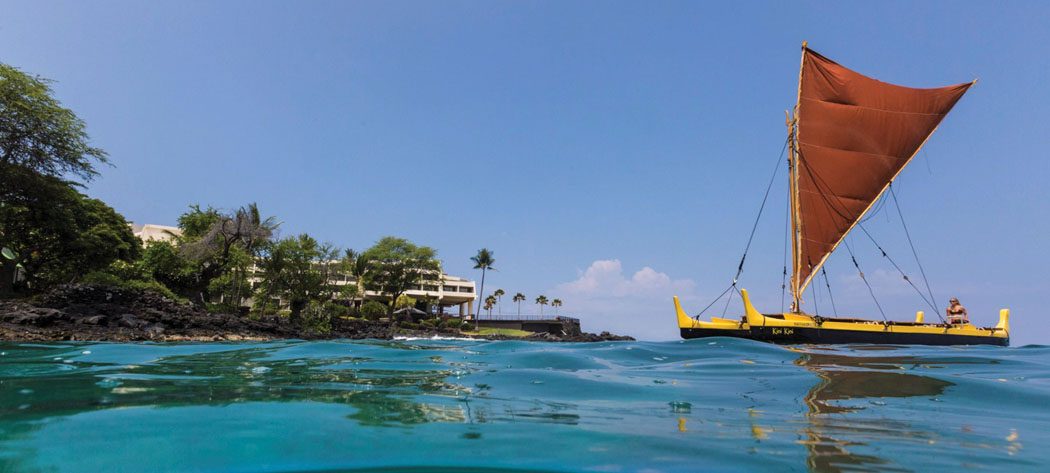
Hawaiian Voyaging Values
In honoring Hawaiian history by learning the place names of its ahupua‘a (land divisions), and the mo‘olelo (stories) of the wahi pana that the crew visits, Nā Pe‘a establishes a Hawaiian cultural presence. Wahi pana is the concept of a place’s significance in Hawaiian culture, such as places with a pulse, like Kīholo Bay.
“Kīholo is the wooden hook with a bone point used to catch a shark, but the literal translation fails to truly capture the bay’s importance to Hawaiian chiefs,” Nā Pe‘a instructor Dale Fergerstrom explains. “The kūpuna shared the mo‘olelo of two mo‘o [protective spirits] that live in Kīholo’s ponds to remind us that we have to protect these spots. If we don’t, they go away.”
Nā Pe‘a participants don’t just embrace the values and traditions of Hawaiian voyaging. This past October, they followed in the very canoe-path of ancient voyagers who braved the treacherous ‘Alenuihāhā Channel between Hawai‘i and Maui. On October 2, 2019, Kalani learned that Maui’s Trilogy Excursions catamaran was completing its dry dock at Honokōhau Harbor. He made a spur of the moment move, asking the boat’s captain if it would be possible to take the Nā Pe‘a crew back on its return trip across the ‘Alenuihāhā. The Trilogy Excursions company agreed, and within 12 hours, crew members were notified and arrangements made. A rare opportunity for the Nā Pe’a crew, only six members were given permission to make the ‘Alenuihāhā crossing. Seven showed up the next morning.
“Nikko Allen showed up at the last minute with his bag,” recalls Kalani. “He said, ‘Uncle Kalani, you always tell us to go after what we want. You tell us to grab life and shake it until it gives us what we are after. So here I am!’” On the morning of October 3rd, seven Nā Pe‘a crew members set sail on Trilogy III bound for Maui.
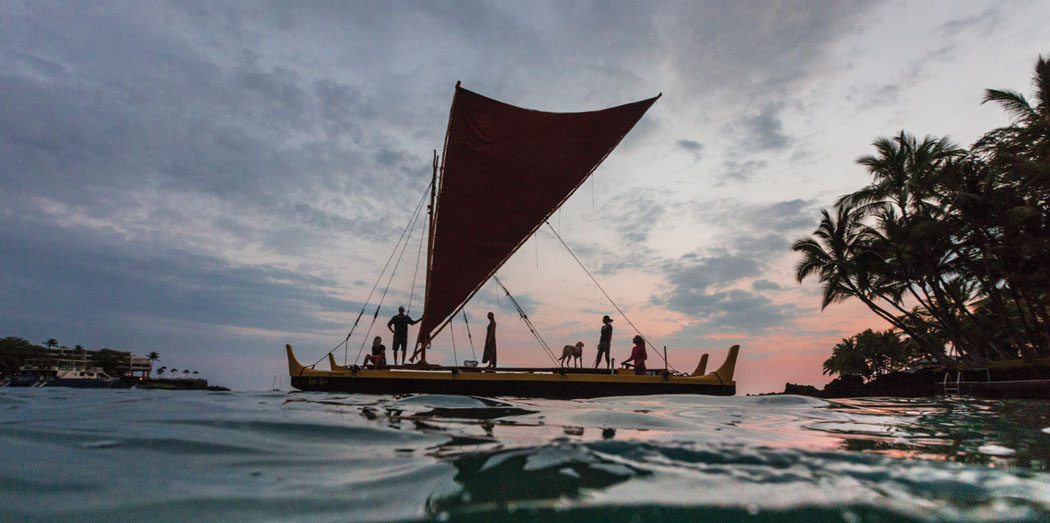
Sailing into the Future
With wind from the ‘Alenuihāhā Channel still filling the sails of their dreams, the Nā Pe‘a participants are preparing to sail into 2020 at full speed. Their goal for this coming year is to take the Nā Pe‘a canoes to Maui and sail them to the island of Kaho‘olawe. This pursuit compliments the program’s dedication to cultivating an interest in career and vocational goals in the field of environmental sciences, agriculture, and community development.
“Uncle Kalani says sailing is life. You have to commit to your path and navigate the winds and rough seas. For me, a degree in electrical engineering is the path,” Nā Pe‘a veteran and Konawaena’s 2018 Valedictorian Cyrus Jumalon shares. “In the canoe, you have to avoid rocks and shallow reefs. In life, those rocks can be drugs or any negative distraction. Anything that would deter you from reaching your destination.”
Cyrus, who attends college in Colorado, is committed to following his path back to Hawai‘i Island after graduating. “I want to use my degree to teach Hawai‘i to run on more sustainable energy. I want to help my community!”
The Nā Pe‘a students learn to be prepared for the sea’s unpredictability, but their experience aboard the floating classroom has many practical applications as well. “Some challenges you see coming and some you don’t. The point is, how do you respond?” Kalani reminds the crew. “You have to adjust, and get past the rocks and through the currents.”
“What are we going to do about plastic in the ocean and the future of recycling on the island? Or how will you treat someone who makes you upset?”
In Nā Pe‘a, the canoe brings into focus a global recognition and connection, and teaches students to think about challenges outside themselves and how individual actions impact entire communities. “Everything you need to know in life you can learn on a canoe: sustainability, teamwork, working with your environment instead of against it,” insists Kalani. “It’s deeper than learning how to sail an ancient canoe. It’s learning how to move forward into the future with style and grace.” ❖
For more information: napea.info
